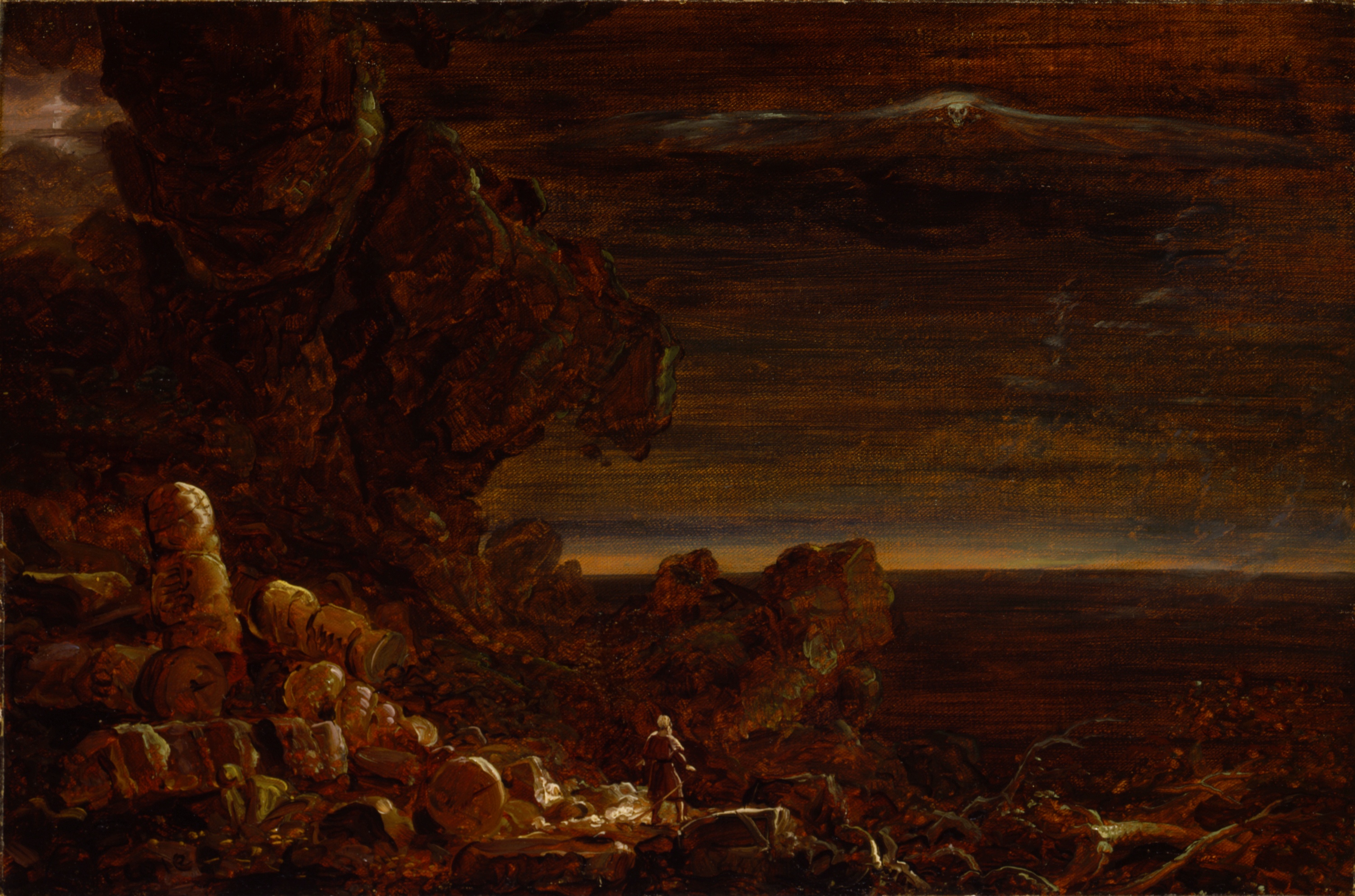The Meaning of Life Through Artنموونە

Day 1: The Dilemma of Mortality
Art can powerfully portray the universality of our time on earth: the natural life cycle of birth, growth, decay, and death. This process, once begun, marches forward at its own pace, indifferent to the qualms and delights of man.
We are all in this process together, and we know it. Yet the passage of time, like the movement of clouds, is just slow enough that it is, at least most of the time, almost imperceptible.
Without fail, the older we get, the more compressed our earthbound sojourn tends to feel. This forces us to confront the brevity of our time on this planet. (This compression of time can occur sooner in our lives if we face an early loss of a loved one, major health problems, or other crises.)
Whenever life’s fleetingness hits us, aspirations (wealth, success, approval) that once held so much appeal begin to lose their luster. The chipping veneer alights in us a yearning for a more permanent, incorruptible source of hope.
Creators of art are often keenly aware of this fleetingness. Poets—who paint with words—are also aware of it:
So teach us to number our days,
That we may present to You a heart of wisdom. (Psalm 90:12)
In this psalm, the author (Moses) speaks to the dilemma of mortality: the tension between knowing that our days are numbered and the uncertainty that follows as we determine how to spend our remaining time.
In this reading plan, we will consider this dilemma of mortality using a series of paintings, The Voyage of Life, by the influential 19th-century landscape painter Thomas Cole. We will endeavor not only to examine the inescapable finiteness of our time on earth, but to gain a richer perspective on the questions that naturally follow—questions fundamental to the human condition:
·Why are we here?
·Where are we going?
From the beginning of time, death has been considered the great unifier. Yet, for Christians, death is not the end.
My hope is that, through this reading plan, you will come to know—or to know better—the one and only Living Hope, that solid anchor for our souls, who offers eternal life to all who trust in Him.
About the Artist
Thomas Cole was a British-American painter born in Lancashire, England, in 1801, and raised in Steubenville, Ohio. Largely self-tutored, Cole represents the archetypal American figure of the autodidact. In his twenties, he moved to Philadelphia and then to Catskill, New York. The latter remained his home with the exception of a few years spent abroad until his death at age 47.
Cole is widely regarded as the founder of the Hudson River School art movement, an informal group comprising landscape painters influenced by European Romanticism and American expansionism in their idyllic depictions of the American landscape.
Cole had a deep reverence for nature that was evident from his earliest paintings. Across his brief but influential career, his art featured an interplay between the pristine beauty of breathtaking landscapes and the foreboding destruction brought on by civilization. Marked by a distinctive melancholy and religious undertones, his paintings are imbued with moralistic motifs that expose his own complex, evolving feelings about what he saw as the cyclical nature of life.
Though Cole’s art features obvious biblical themes, our knowledge of Cole’s personal faith is largely limited. However, we can infer from the elements embedded in his paintings a belief in the promise of an eternal home in heaven—and a belief in the God who makes this possible.

The Pilgrim of the World at the End of His Journey (study for series The Cross and the World)
Thomas Cole ca. 1847 Oil on canvas, 12 x 18 in. (30.5 x 45.7 cm.)
Smithsonian American Art Museum, Museum purchase, 1988.1
https://americanart.si.edu/artwork/pilgrim-world-end-his-journey-study-series-cross-and-world-5079
Cole’s Final Works
When he died unexpectedly in 1848, Cole left behind studies of an incomplete, five-part series titled The Cross and the World. The series features and contrasts two characters: a pilgrim of the cross and a pilgrim of the world (depicted in the above painting). The pilgrim of the cross finds spiritual peace, while the pilgrim of the world finds that his worldly pleasures have wasted away with the passage of time. The pilgrim of the cross finds profundity and fulfillment; the pilgrim of the world, squalor and emptiness.
Though unfinished, the series reveals Cole’s mindset in his last days. He conveys truths about the paths we choose and what awaits us at the end of life. The pursuit of materialism and earthbound achievements ends in degradation, while the pursuit of spiritual riches and eternal glory ends with salvation and eternal life.
کتێبی پیرۆز
دەربارەی ئەم پلانە

This devotional reading plan connects timeless works of art by 19th-century artist Thomas Cole with Scripture, exploring themes of mortality, aging, and biblical hope. See how Cole’s Voyage of Life series beckons us to consider our own earthly pilgrimage and stage of life—asking the fundamental questions, as the psalmists and others in the Bible did, “Why am I here?” and “Where am I going?”
More









